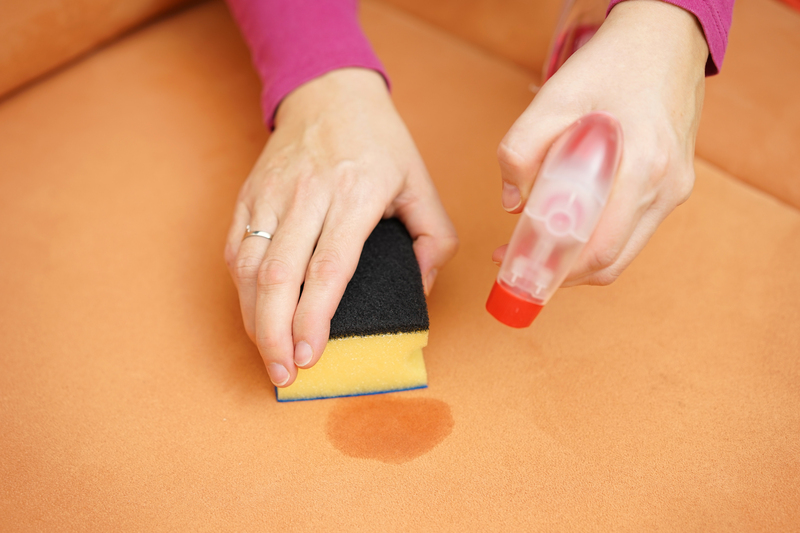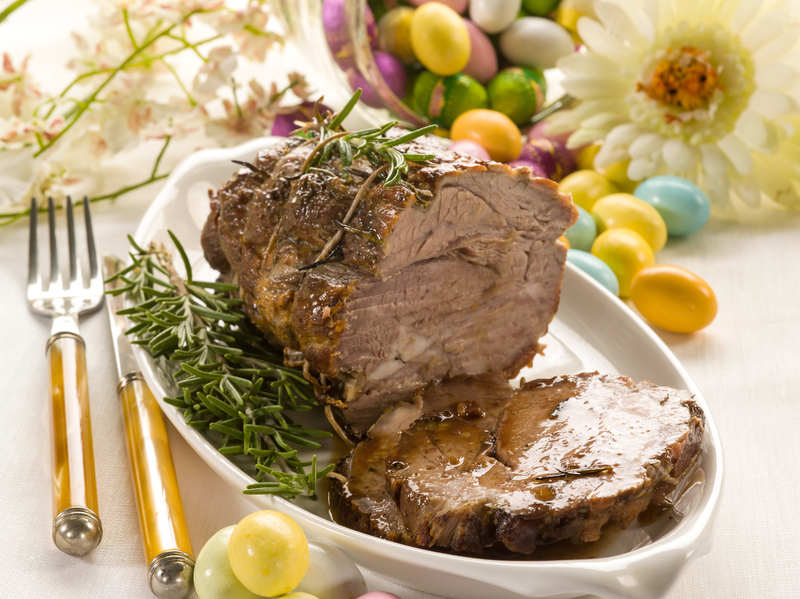Efficient Ways to Eliminate Burnt Residue Off Your Stovetop
Posted on 19/05/2025
Efficient Ways to Eliminate Burnt Residue Off Your Stovetop
If you've ever accidentally let a pot boil over or a sauce splatter while cooking, you're well acquainted with the tough, blackened stains left behind. Burnt stove stains not only look unsightly, but they also impact your cooking area's hygiene and even affect the taste and aroma of future meals. That's why it's essential to master the most efficient techniques for removing burnt residue off your stovetop.
In this comprehensive guide, we'll explore a variety of methods to clean burnt-on residue from stovetops, tailored for different stove types and cleaning preferences. Whether you have a glass, ceramic, gas, or electric stove, you'll discover practical, eco-friendly, and effective solutions to regain your sparkling kitchen.

Why It's Important to Remove Burnt Residue from Your Stovetop
- Hygiene and Safety: Accumulated burnt food can harbor bacteria and unpleasant odors.
- Performance: Residue can impact heat distribution, making cooking inefficient.
- Appliance Longevity: Regular cleaning prolongs your stovetop's lifespan.
- Kitchen Aesthetics: A clean stovetop elevates your kitchen's appearance.
Types of Stovetops: How Burnt Residue Differs
Understanding your stovetop type is crucial, as cleaning methods vary.
Glass and Ceramic Stovetops
These stovetops require gentle care to avoid scratches. Burnt marks tend to bake onto the surface, making removal tricky without the right approach.
Gas Stovetops
Removable burner grates and drip pans often catch spills and splatters. Thick layers of burnt-on residue are common around burners.
Electric Coil Stovetops
Burnt residue can become trapped under coils and in pans below, making deep cleaning essential.
Preparing to Clean: What You'll Need
Before diving into efficient stovetop cleaning methods, gather these essential supplies:
- Baking soda
- White vinegar
- Lemon juice
- Dish soap
- Soft cloths or sponges
- Plastic scraper or razor blade (for glass stovetops)
- Toothbrush or non-abrasive brush
- Microfiber towel
- Rubber gloves (optional, for tough stains)
Method 1: Using Baking Soda and Vinegar for Stubborn Burnt Residue
The combination of baking soda and vinegar is a time-tested, natural solution to eliminate tough burnt-on food on stovetops, especially glass and ceramic ones. Here's how to use these kitchen staples efficiently:
- Allow your stovetop to completely cool down. Remove any loose debris with a damp cloth.
- Generously sprinkle baking soda over the areas with burnt residue.
- Spray or drizzle white vinegar onto the baking soda to create a fizzing action. This reaction helps loosen burnt food particles.
- Let the mixture sit for 15-20 minutes for maximum effectiveness.
- Use a soft damp cloth or sponge to gently scrub the area, focusing on burnt patches. For persistent stains, gently use a plastic scraper or a razor blade (for glass surfaces only), keeping the blade at a low angle to avoid scratching.
- Wipe the entire surface with a clean, wet cloth to remove all residue. Buff dry with a microfiber towel.
This efficient method is safe, natural, and highly effective for removing burnt residue from ceramic or glass stovetops.
Method 2: Lemon Juice and Salt Scrub for Natural Cleaning
For those who prefer eco-friendly options, a lemon and salt scrub can be surprisingly powerful against burned residue.
- Cut a lemon in half and sprinkle salt over the burnt areas on your stovetop.
- Use the lemon half as a scrubber, pressing down and rubbing the salted surface in circles. The citric acid in the lemon and the abrasiveness of the salt work as a natural degreaser.
- Allow the juice to sit on tougher areas for 10 minutes before scrubbing again.
- Wipe away the residue with a damp cloth. Repeat as needed.
This is one of the most gentle yet effective ways to eliminate burnt-on grease and residue off your stove.
Method 3: Dish Soap Solution for Everyday Burnt Food Removal
- Mix a few drops of dish soap with warm water to form a soapy solution.
- Soak a soft cloth in the solution and lay it over burnt areas for 15-20 minutes.
- Gently scrub with the same cloth until the residue lifts away.
- Rinse and wipe clean to avoid any soap buildup.
*Tip: Using a sponge with a non-abrasive side makes this one of the most efficient ways to eliminate mild burnt-on residue off your stovetop without damaging surfaces.
Deep Cleaning Gas Stovetop Burners and Grates
Burnt residue builds up quickly around gas stove burners and grates. Here's how to efficiently eliminate stubborn burnt stains from gas stovetops:
- Remove grates and burner heads when completely cool.
- Soak them in a sink filled with hot water and a squirt of dishwashing liquid for at least 20-30 minutes.
- Use a non-abrasive brush or sponge to scrub away softened burnt-on residue.
- Tough stains? Make a paste of baking soda and water; apply and let sit for 15 minutes before scrubbing again.
- Rinse thoroughly and dry before reassembling.
This approach not only restores your gas stovetop's shine but also keeps burners functioning efficiently by preventing blockage from residue.
Specialized Cleaners: When to Use Commercial Products
Some burnt-on marks may be so tenacious that specialized stovetop cleaners become necessary:
- Choose cleaners specifically designed for your stovetop type (glass, ceramic, stainless steel, etc.).
- Always follow manufacturer's instructions to avoid damage.
- Use a soft cloth or a gentle scraper when applying the cleaner.
Glass and ceramic stove top cleaners are formulated to eliminate even the most persistent burnt residue without scratching or dulling the surface.
Important: Always test a new cleaner on a small, inconspicuous area first and avoid using harsh abrasives or steel wool.
How to Remove Burnt Residue from Electric Coil Stovetops
Cleaning burnt residue off electric coil stoves involves a few extra steps:
- Unplug the stove or turn off the power supply before starting.
- Remove the coils (consult your user manual for proper unplugging technique).
- Wipe coils with a damp cloth; stubborn spots may require a light baking soda paste. Avoid submerging coils in water.
- Clean the drip pans with baking soda, vinegar, or a dish soap soak as described above.
- Dry thoroughly before reassembly.
These proven techniques for eliminating burnt-on residue from electric stoves help maintain appliance safety and performance.
Preventative Tips: Keeping Stovetops Free from Burnt Residue
*Prevention is the most efficient way to minimize burnt residue on your stovetop. Try these helpful strategies:
- Wipe spills quickly: Clean up spills and splatters as soon as your stove cools down to prevent them from baking onto the surface.
- Deep clean regularly: Set a schedule for thorough cleaning--even if there are no visible burnt stains yet.
- Use pan lids and splatter guards: Prevent food from escaping the pot or pan.
- Cook at appropriate heat: High heat increases splatter and boiling over.
- Line drip pans (for gas/electric): Use foil liners or specially designed covers for easier cleanup.
Common Mistakes to Avoid When Cleaning Burnt Stovetops
- Avoid steel wool or metal scouring pads on glass, ceramic, or stainless steel--they scratch surfaces worse than burnt residue.
- Do not use abrasive powdered cleaners unless explicitly recommended.
- Refrain from excessive soaking of electrical components or gas burner parts.
- Never attempt to clean when the stovetop is hot. This is not only unsafe but also less effective.
Frequently Asked Questions: Efficient Burnt Residue Removal
Can I use vinegar on any stovetop?
Vinegar is safe for glass, ceramic, and most stainless steel: avoid using it on cast iron components, as it can cause corrosion.
What if the burnt residue is extremely tough?
Repeat the baking soda and vinegar method or switch to a commercial stovetop cleaner. For deeply embedded stains, a specialized razor blade scraper (used gently) may be necessary on glass stovetops.
Is it safe to use ammonia for burnt residue?
Ammonia is effective on removable metal parts like grates but should not be used directly on glass or ceramic surfaces due to risk of damage and fumes. Always ensure proper ventilation.
How often should I deep clean my stovetop?
Ideally, deep clean once a week or after heavy use to prevent burnt residue from building up. Light daily wiping can significantly reduce the need for deep scrubbing.

Summing Up Efficient Ways to Eliminate Burnt Residue Off Your Stovetop
Keeping your stovetop clean and residue-free is a cornerstone of a hygienic and attractive kitchen. By incorporating these efficient stovetop cleaning methods--tailored to your appliance--you ensure quick removal of burnt-on food, enhanced kitchen safety, and longer appliance life. Whether you swear by natural solutions like baking soda and vinegar, prefer lemon and salt, or rely on commercial stovetop cleaners, consistency and the right technique are key.
Remember: Act quickly, choose the right method for your stove type, and avoid harsh abrasives for best results. With the comprehensive, efficient techniques described here for eliminating burnt residue off your stovetop, your cooking space will remain sparkling, sanitized, and always ready for your next delicious creation.
Bonus Tip: Creating a Kitchen Cleaning Routine
- Daily: Wipe down stovetop after cooking.
- Weekly: Use a deep cleaning method suited for your stove.
- Monthly: Clean burner grates and drip pans.
Make stovetop cleanliness a habit, and you'll rarely have to contend with stubborn burnt-on messes again!





